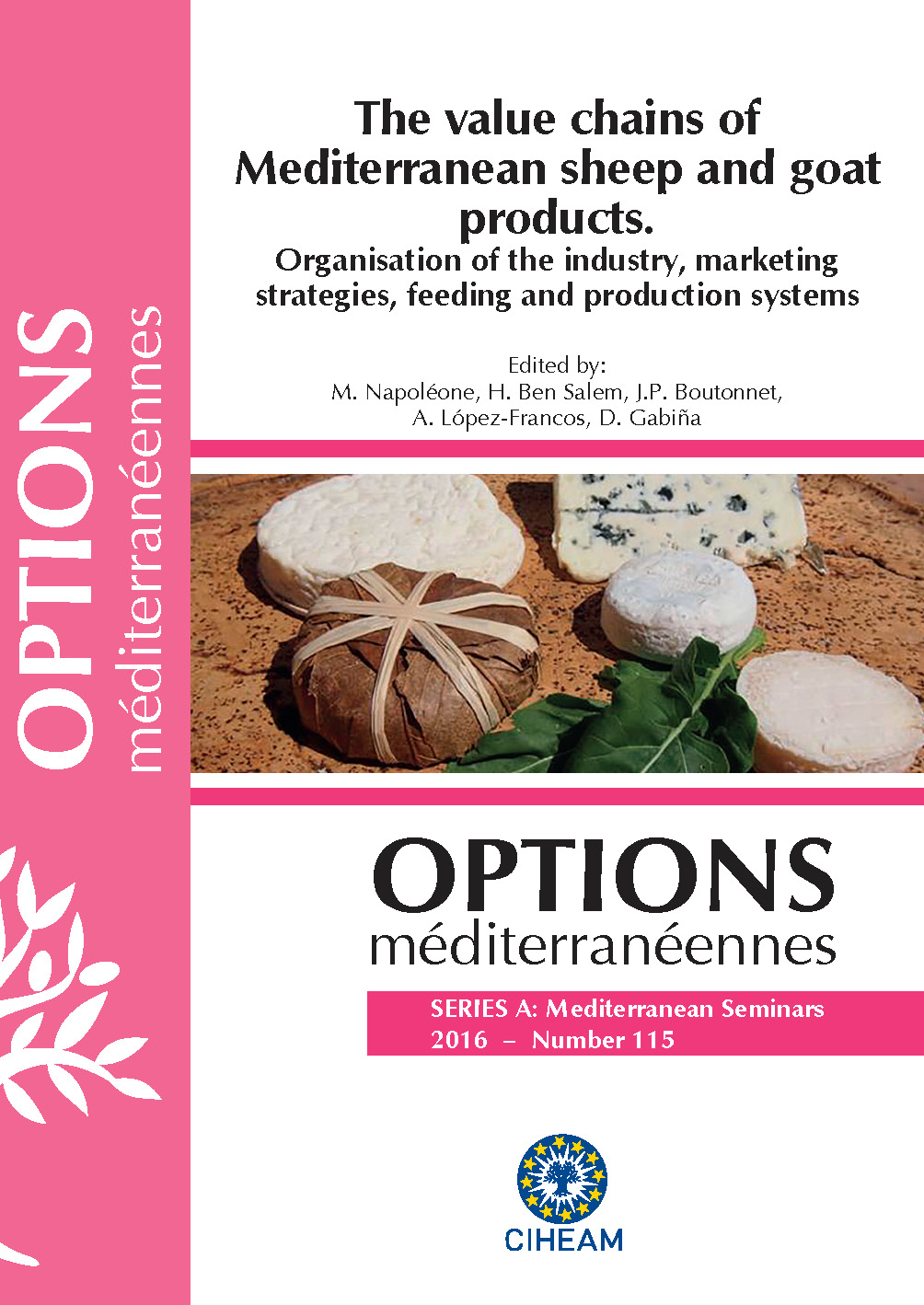| Article précédent | p. 261-267 | Article suivant |
Effects of concentrate diets supplementation of pregnant Kalahari Red goats grazed on Chloris gayana on performance characteristics in South-Western Nigeria
The amount of meat and milk produced depends largely on the performance of does during and after pregnancy among other factors. High performing does have the tendency of producing more milk and healthy kids with reasonable weight at birth compared to least performing does. Thus, increased meat and milk production. A study was conducted to investigate the effects of concentrate diets supplementation of pregnant Kalahari Red goats grazed on Rhodes grass (Chloris gayana) on their performance characteristics. A total of 33 primiparous Kalahari Red does between 2-21/2 years with an average body weight of 38.10 ± 1.13 kg were randomly allotted to 3 treatments consisting of 11 does per treatment for a feeding trial that lasted for 22 weeks. Concentrate diets with CP levels of 12.42% (LPD; 124.93 g day-1), 14.18% (MPD; 145.87 g day-1) and 16.35% (HPD; 168.19 g day-1) were fed to the does at 3% of their body weight from mating till kidding. Data obtained were subjected to ANOVA in a completely randomized design at 5% probability level using SAS® 9.1 Statistical package. It was observed at the end of the study that pregnant Kalahari Red does fed MPD recorded highest values for weight gain (20.57 kg); net weight gain (10.73 kg); daily weight gain (135.87 g day-1); and daily weight gain less foetal and afterbirth weights (71.06 g day-1) compared to other does. From the results of this study, it can be concluded that dietary supplementation of grazing pregnant Kalahari Red does with concentrate diet containing 14.18% CP had the best performance characteristics for increased meat and milk production.
La quantité de viande et de lait produits dépend largement des performances des chèvres pendant et après la gestation, entre autres facteurs. Les chèvres à fortes performances tendent à produire plus de lait et de chevreaux sains ayant un poids raisonnable à la naissance, comparées aux chèvres à moindres performances. Ainsi la production de viande et de lait est augmentée. Une étude a été menée pour examiner les effets de la supplémentation en concentré sur les caractéristiques de performances chez des chèvres gestantes de race Kalahari Rouge broutant l’Herbe de Rhodes (Chloris gayana). Un total de 33 chèvres primipares Kalahari Rouge entre 2-2,5 ans avec un poids corporel moyen de 38,10 ± 1,13 kg ont été réparties au hasard en 3 traitements avec 11 chèvres par traitement pour un essai d’alimentation qui a duré 22 semaines. Des régimes à concentré ayant des niveaux de PB de 12,42% (LPD ; 124,93 g/jour-1), 14,18% (MPD ; 145,87 g/jour-1) et 16,35% (HPD ; 168,19 g/jour-1) ont été distribués aux chèvres à 3% de leur poids corporel depuis la mise à la lutte jusqu’à la mise bas. Les données obtenues ont été soumises à ANOVA selon un dispositif complètement aléatoire avec un niveau de probabilité de 5% en utilisant le logiciel statistique SAS® 9.1. Il a été observé qu’à la fin de l’étude, les chèvres gestantes Kalahari Rouge recevant MPD ont enregistré les plus fortes valeurs pour le gain de poids (20,57 kg) ; le gain de poids net (10,73 kg) ; le GMQ (135,87 g/jour-1) ; et le GMQ moins le poids foetal et placentaire (71,06 g/jour-1) comparées aux autres chèvres. D’après les résultats de cette étude, on peut conclure que la supplémentation alimentaire des chèvres gestantes de race Kalahari Rouge au pâturage, avec un concentré contenant 14,18% de PB permettait de meilleures performances pour une production accrue de viande et de lait.
- [ Afficher ]
- [ Télécharger ]
- [ Exporter la citation ]
Vous pouvez télécharger la citation au format :
- [ Imprimer ]
-
Mots-clés
GESTATIONCiter cet article
Oderinwale O.A., Oluwatosin B.O., Bemji N.M., Sowande O.S. Effects of concentrate diets supplementation of pregnant Kalahari Red goats grazed on Chloris gayana on performance characteristics in South-Western Nigeria. In : Napoléone M. (ed.), Ben Salem H. (ed.), Boutonnet J.P. (ed.), López-Francos A. (ed.), Gabiña D. (ed.). The value chains of Mediterranean sheep and goat products. Organisation of the industry, marketing strategies, feeding and production systems. Zaragoza : CIHEAM, 2016. p. 261-267. (Options Méditerranéennes : Série A. Séminaires Méditerranéens; n. 115). Joint Seminar of the Subnetworks on Nutrition and on Production Systems of the FAO-CIHEAM Network for Research and Development in Sheep and Goats, 2015/06/16-18, Montpellier (France) . http://om.ciheam.org/om/pdf/a115/00007286.pdf



